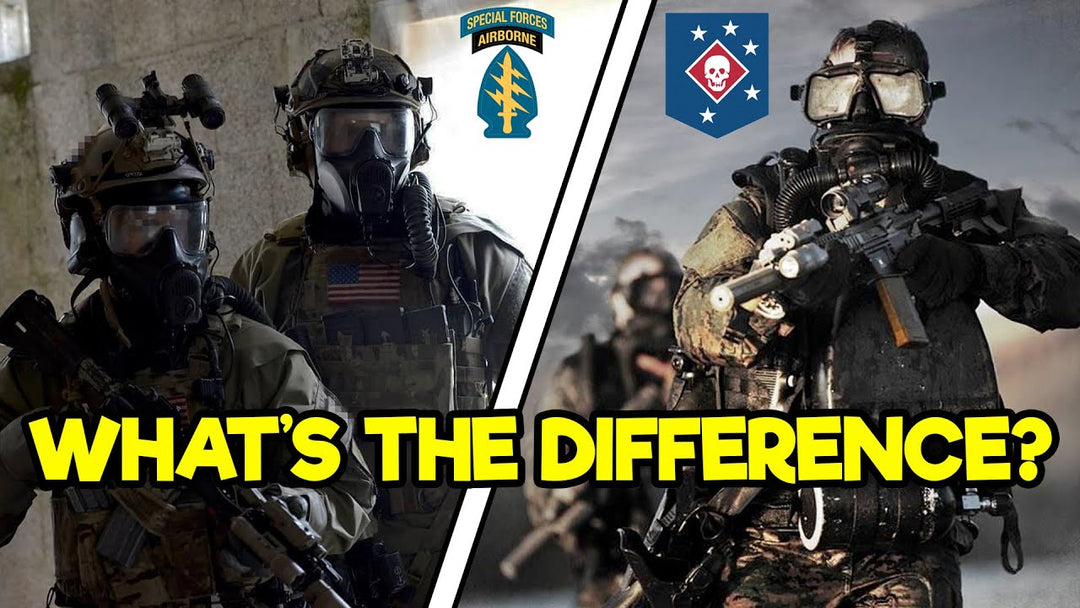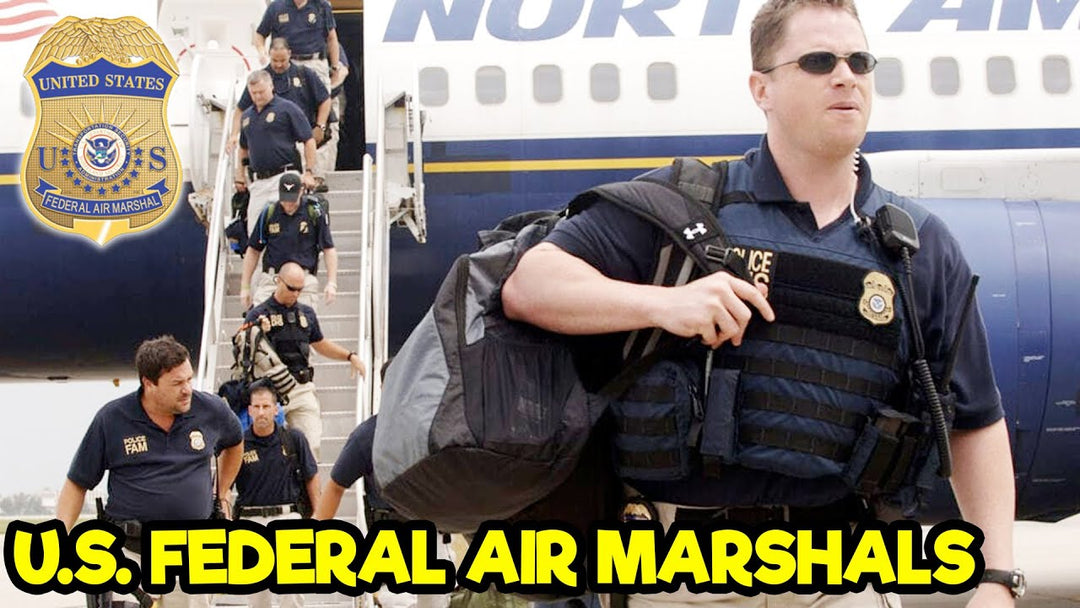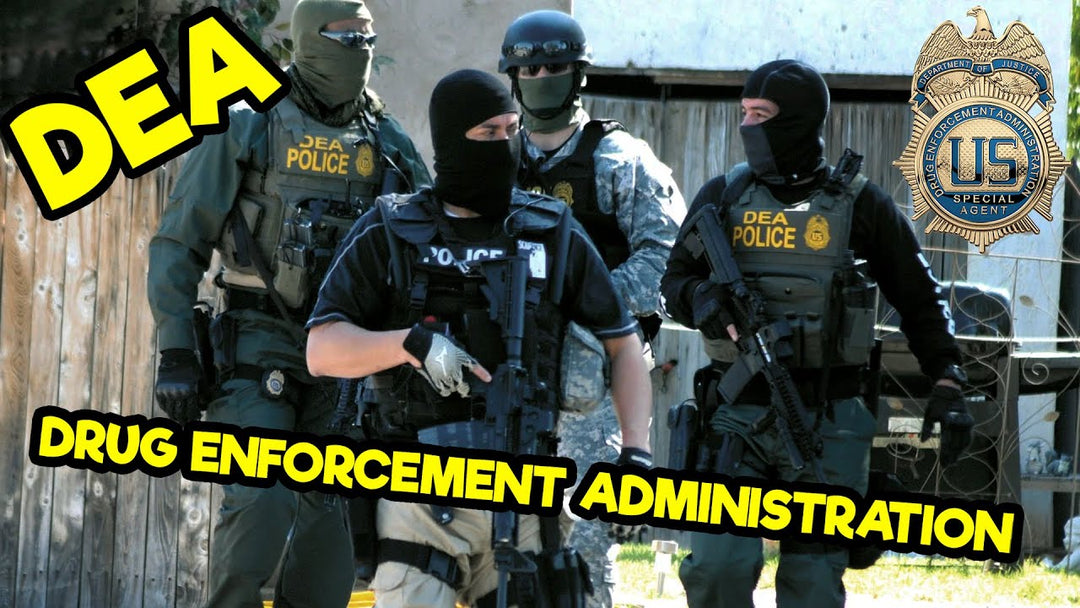Every U.S. Army Special Operations Unit Explained

Every branch of the U.S. military, aside from the Space Force, has its own special operations forces, each having their own niche that further strengthens the diversification of USSOCOM. While every SOF force has its own overlaps and similarities with one another, Army Special Operations is the largest of them all.
Because of its size, USASOC and its personnel have a wide reach and breadth around the globe in military operations. On any given day, dozens of USASOC elements are deployed around the world. With that mentioned, we’re going to be covering the Army Rangers, Special Forces, 160th SOAR, PSYOP, and Civil Affairs, as well as an honorable mention.
While the Army is a land based branch with a focus on ground operations, its special operations are trained to operate in the full spectrum of military operations and conflict to meet their objectives. But that’s just scratching the surface, let’s dig a little deeper and lead the way with the Army Rangers.
TABLE OF CONTENTS
ARMY SPECIAL OPERATIONS: ARMY RANGERS
ARMY SPECIAL OPERATIONS: SPECIAL FORCES
ARMY SPECIAL OPERATIONS: 160TH SPECIAL OPERATIONS AVIATION REGIMENT
ARMY SPECIAL OPERATIONS: PSYCHOLOGICAL OPERATIONS (PSYOP)
ARMY SPECIAL OPERATIONS: ARMY EOD (HONORABLE MENTION)
ARMY SPECIAL OPERATIONS: CIVIL AFFAIRS
ARMY SPECIAL OPERATIONS: CONCLUSION
ARMY SPECIAL OPERATIONS: ARMY RANGERS

If you’re the target of a U.S. Army ranger assault, we wouldn’t want to be you when the barrage begins. The Army Rangers have built a fierce reputation for their ability to quickly mobilize and rain hell on the enemy.
The U.S. Army Rangers are a unique and deadly special operations force. Since they are light infantry, this allows them to quickly mobilize and assault wherever they’re needed to get the job done. And this is what they’re known for - they’re the U.S. Army’s premier direct action raid force. Nobody can bring as much firepower and lethality in such a short amount of time as the 75th Ranger Regiment can.
As a lethal, agile, and flexible fighting force, the Army Rangers are capable of conducting many complex joint special operations missions. With that said, their three main missions are Special Operations Raids, Forcible Entry Operations, and Special Reconnaissance.
Each Ranger battalion is combat ready and prepared to fight United States adversaries, being able to deploy within 18 hours of notification. In fact, in recent history, there’s almost always been a battalion deployed. At the end of 2021, the Rangers had completed over 7,000 days of unbroken combat operations. That’s insane!
What also makes the Rangers unique is their diverse skill sets and backgrounds that make up the Regiment. Unlike other special operations entities, the Army Rangers take a wide range of MOS’s and put them through the same selection process, where they earn their title and place as an Army Ranger and continue to do their job, just under the 75th Ranger Regiment. That means that there are infantrymen, medics, intelligence, and even cooks, all serving as Army Rangers and getting the job done.
Their mottos, “Rangers Lead the Way!” and “Sua Sponte”, translated to “Of their own accord” are a testament to the leadership, courage, and ambition that each Ranger has both on and off the battlefield.
ARMY SPECIAL OPERATIONS: SPECIAL FORCES

While most people use the term special forces to refer to special operations forces, it’s actually its own community. The U.S. Army Special Forces, also known as the Green Berets, because they wear green berets, are experts in foreign internal defense and unconventional warfare. Special Forces soldiers are elite teams of soldiers consisting of mature, intense, highly-trained operators.
To put things very simply, each Green Beret knows another language or two, and depending on which they know, gets placed in that geographical area for long periods of time to work with the locals and train them up to fight on their own. Because of that, SF members work closely together and rely on one another under isolated circumstances for long periods of time, and they can have some very long deployments.
So in layman’s terms, what does this look like in a practical sense? Essentially, Green Berets can be in South America training military police to fight drug cartels or assembling guerrilla armies in Vietnam. That’s what foreign internal defense is.
They operate in twelve man teams, called Operational Detachment Alphas, or ODA’s, each of whom has a specific function on the team, however, all members of an ODA conduct cross-training. And by function, we mean that Green Berets are dispersed amongst the various MOS’s available to them in the 18-series, which is the designator for their community.
What also makes Special Forces unique is their ability to be employed throughout the three stages of the operational continuum: Peacetime, Conflict, and War. That means that they can be in places you wouldn’t even expect, since not all they do revolves around wartime efforts. They might be preventing something from popping off, mitigating another circumstance halfway across the globe, or actively engaging in conflict somewhere else. They have a lot on their plate, and pursue seven doctrinal missions: Unconventional Warfare, Foreign Internal Defense, Special Reconnaissance, Direct Action, Combating Terrorism, Counter-proliferation, and Information Operations.
Their motto, De Oppresso Liber, which translates to “To Free the Oppressed” attests to their work they do behind the scenes to make an impact all around the globe.
ARMY SPECIAL OPERATIONS: 160TH SPECIAL OPERATIONS AVIATION REGIMENT

If you’re an operator, you’re going to need a lift to get boots on the ground. Whether it's to insert deep behind enemy lines, a mission’s gone south and you need a hot exfil, or you’re being transported from one area to another, if you’re in SOF, the 160th Special Operations Aviation Regiment has you covered.
160th SOAR, nicknamed the Night Stalkers, is known for its proficiency in nighttime operations. In fact, they pioneered the Army’s nighttime flying techniques. The name stems from its capability to strike undetected during the hours of darkness, coupled with its unprecedented combat successes. In high-stakes SOF missions where aircraft are needed to transport personnel, the 160th SOAR is there to answer the call.
It goes without saying, these soldiers are highly trained and ready to accomplish the toughest missions in all environments, anywhere in the world, day or night, with unparalleled precision. With how intense their missions can be, the 160th SOAR actively seeks and assesses the best-qualified aviators, crew members, and support personnel in the Army to ensure only the best of the best are among the ranks.
Their mission is to organize, equip, train, resource, and employ their aviation forces worldwide in support of contingency missions and combatant commanders. These professionals don’t stop at flying around Army SOF, they’re utilized by SOF forces in other branches too. The Night Stalkers employ highly modified Chinook, Black Hawk, and assault and attack configurations of Little Bird helicopters.
They continue to develop and employ new technology, tactics, techniques, and procedures for the battlefield. Time and again, soldiers of this unit demonstrate that they live by their motto, “Night Stalkers Don’t Quit.”
ARMY SPECIAL OPERATIONS: PSYCHOLOGICAL OPERATIONS (PSYOP)

Warfighting isn’t all about brawn; there’s a lot of brains involved too. The mental and psychological element of warfare can make a giant impact on adversaries and diplomacy, and PSYOP is the one that is boots on the ground doing just that. PSYOP is short for Psychological Operations.
Like their name suggests, PSYOP deals with all things related to psychology to pursue whichever missions and objectives they are being tasked with. Using unconventional techniques, PSYOP soldiers strategically influence and deceive. They use their intelligence, interpersonal skills, and cultural sensitivity to help sway the opinions and actions of foreign governments, groups, and individuals. Essentially, they serve as the supported commander’s voice to foreign populations to convey intent and establish credibility. They provide public information to foreign populations in support of humanitarian activities, restore or reinforce legitimacy, ease suffering, and maintain civil order.
The four main missions they execute are: Influence with Information, Deliberately Deceive, Advise Governments, and Provide Communications for Rescue Efforts.
They’re involved with some pretty cool work. One day they could be influencing a foreign leader to make a certain decision that will further benefit the United States, the next day they could be influencing a population through cyber warfare, advanced communications, or pamphlets, and then make their way over to deliberately mislead enemy forces in the middle of a combat situation. As you can see, the breadth of their capabilities and the types of missions they get tasked with can be interesting, intense, and, most of all, impactful. It’s a good thing we have these guys on our side.
PSYOP soldiers do their work in small, autonomous teams or team up with other SOF units in pursuit of their missions.
Their motto, “Persuade, Change, Influence” sums up everything we wrote about in this section.
ARMY SPECIAL OPERATIONS: ARMY EOD (HONORABLE MENTION)

While Army EOD is technically not special operations, that does not speak to its colorful history and impact on the battlefield.
EOD stands for Explosive Ordnance Disposal. Army EOD teams are responsible for the location, identification, rendering safe, and disposal of hazardous unexploded conventional, chemical, and biological ordnance as well as improvised explosives. In other words, Army EOD renders safe various types of explosives. They do this in conventional settings, in support of SOF, and can work with law enforcement or to protect high level personnel such as the president.
One of their specialties is rendering safe Improvised Explosive Devices, more commonly referred to as IED’s. In fact, the Army EOD managed the largest EOD response to IEDs in Department of Defense history.
One great opportunity any motivated Army EOD tech has afforded them is serving in the 28th EOD Company. The 28th is a dedicated force that supports Army Special Operations Forces. They're charged not only to be the best but to compete with the best, and to win.
Deploying more frequently than any other EOD company, and only one of the three EOD companies that’s on active airborne status, a lot is asked out of those in this company. The higher operational tempo incurred from supporting special operations requires them to be trained up not only in what they do as EOD technicians but also in a lot of the fundamentals of being a SOF operator. Additionally, these missions often require them to work faster and with less equipment, making their job, which is already dangerous enough, even more complex and hazardous. A lot of EOD techs get lots of equipment, trucks, and robots to assist them - not these guys. Working with SOF, they have to carry as little as possible. Ounces = Pounds, and Pounds = Pain.
SOF or not, Army EOD technicians are a highly respectable community that plays an important part in both conventional and special operations missions. Always remember, support in SOF is just as important. They can’t operate without a strong foundation to keep everything running smoothly. The 528th Sustainment Brigade, USASOC’s support unit, is a perfect example of this. SOF enablers in USASOC range from cooks and mechanics, logisticians, communications, intelligence analysts, and medical specialists. Bottom line, don’t forget about the support personnel when it comes to SOF.
ARMY SPECIAL OPERATIONS: CIVIL AFFAIRS

War can have a heavy toll on the populations that happen to be in the middle of it. If an area is stricken with lots of battles, damage, or destruction, or is already not faring too well, Civil Affairs can make their lives better.
Civil Affairs soldiers provide a critical link between commanders and civil authorities of foreign nations, which has played an integral role in peacekeeping operations in various conflicts throughout the world. Trained in foreign languages, cultural expertise, and negotiation techniques, CA soldiers often operate in civilian clothes in over eighty countries worldwide to build networks and accomplish important missions in diplomatically or politically sensitive areas.
Using their knowledge of governance, economics, and politics, they affect human behavior and work towards strategic goals. Essentially, they lessen the impact of military operations on civilian populations in their prescribed area of operations. For example, they might meet local officials to conduct assessments and determine the level of need for critical infrastructure projects like roads, schools, sewer lines, etc. This level of aid for various local populations builds a relationship and network for the commander and ultimately the U.S. government.
You might be thinking, Isn’t it PSYOP’s job to win people over? While PSYOP and CA can go hand in hand, and they definitely need each other for their success, an oversimplified example of the two would be saying that PSYOP is like a marketing organization using media to persuade audiences to support US operations, and CA is like a team of city managers who come in with a clipboard and cash that can assess the needs of the local population and help plan projects to benefit them.
But there’s much more to CA than that. Each CA soldier is highly trained, culturally oriented, linguistically capable, and versatile. Outside of their normal duties and missions, they can be tasked with providing expertise in foreign internal defense, unconventional warfare, and direct action missions. It’s important to note that not all CA is special operations, there’s an active duty component, and a reserve component. The active component, which makes up 10% of all CA personnel, is special operations.
Known as the warrior diplomats, and with the motto “Secure the Victory”, Civil Affairs soldiers play an important role in any major area of conflict.
ARMY SPECIAL OPERATIONS: CONCLUSION

And with that explained, you just learned about six amazing career fields in the world of U.S. Army Special Operations. If you’re interested in any of these communities, and thinking of starting the journey yourself, you’re going to have to put in a lot of work.
If you want to learn more about the military, law enforcement, or government entities, we have a YouTube channel dedicated to providing the best info out there, plus we have a growing list of blog posts as well. Click the links to take you to them!
General Discharge is a veteran-owned, veteran-operated organization that is dedicated to providing the best U.S. Military and Law Enforcement information. With over 250 YouTube videos, over 45 million views, and hundreds of thousands of followers, we have contributed to the success and knowledge of both the current and future generations of service members.






Leave a comment